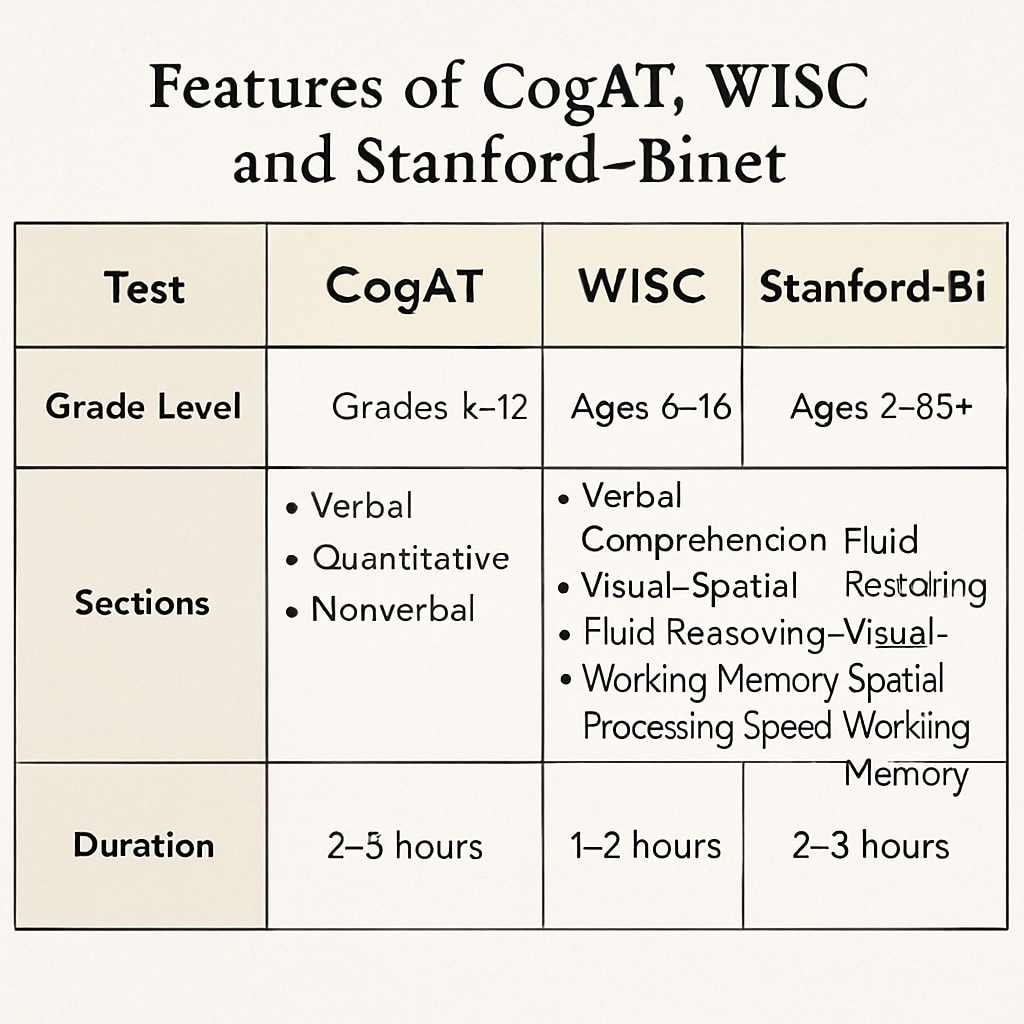Evaluating gifted children requires well-designed tools to accurately measure their intellectual potential. Among the most popular methods are standardized intelligence tests, such as the Cognitive Abilities Test (CogAT), Wechsler Intelligence Scale for Children (WISC), and Stanford-Binet Intelligence Scales. These assessments serve as benchmarks for identifying exceptional talent and guiding educational placement. Understanding the features, strengths, and limitations of these tests is crucial for educators and parents aiming to select the most suitable assessment for their child.
Understanding Key Standardized Intelligence Tests
Standardized intelligence tests are designed to measure cognitive abilities across various domains. While all these tests aim to assess intelligence, they differ significantly in their structure, scoring methods, and applicability to gifted children. Below is an overview of the major tests:
- Cognitive Abilities Test (CogAT): This test evaluates reasoning abilities in three areas: verbal, quantitative, and non-verbal. CogAT is often used in school settings to identify gifted students early.
- Wechsler Intelligence Scale for Children (WISC): Widely recognized for its comprehensive framework, WISC assesses verbal comprehension, working memory, processing speed, and more. It provides a detailed profile of a child’s strengths and weaknesses.
- Stanford-Binet Intelligence Scales: Known for its historical significance, Stanford-Binet offers a more individualized approach to measuring intelligence across five factors: fluid reasoning, knowledge, quantitative reasoning, visual-spatial processing, and working memory.

Factors to Consider When Choosing the Right Test
Choosing the most appropriate intelligence test involves evaluating several factors. The following considerations can help guide this decision:
- Age Range: Ensure the test is suitable for the child’s age group. For example, Stanford-Binet offers assessments for children as young as two, while WISC is tailored for ages 6–16.
- Purpose of Assessment: Determine whether the test is intended for educational placement, identifying specific strengths, or evaluating overall intellectual ability.
- Test Format: Consider whether the child may perform better with a verbal, written, or practical format. For example, CogAT emphasizes reasoning, while WISC includes processing speed as a distinct component.
- Cultural Fairness: Some tests, like CogAT, include non-verbal sections to reduce cultural bias, making them suitable for diverse populations.
- Accessibility: Ensure that the test is available in your region or through certified professionals.

Maximizing the Benefits of Intelligence Testing
To make the most of standardized intelligence testing, parents and educators should adopt a strategic approach:
- Prepare the Child: Familiarize the child with the testing process to reduce anxiety and encourage optimal performance.
- Interpret Results Holistically: View test scores as one part of a broader evaluation. Additional factors, such as creativity, emotional intelligence, and interests, should also be considered.
- Collaborate with Professionals: Work closely with psychologists or assessment experts to ensure accurate interpretation and actionable recommendations.
- Follow Up: Use the test results to develop tailored educational plans that nurture the child’s unique abilities.
While intelligence tests provide invaluable insights, they are not definitive measures of a child’s potential. Giftedness often includes qualities such as resilience, curiosity, and creativity that go beyond quantitative metrics.
Readability guidance: Use concise paragraphs and lists to summarize key points. Employ short, manageable sentences and ensure smooth transitions with linking phrases such as “however,” “in addition,” and “as a result.” Aim for a balanced mix of technical and accessible language.


